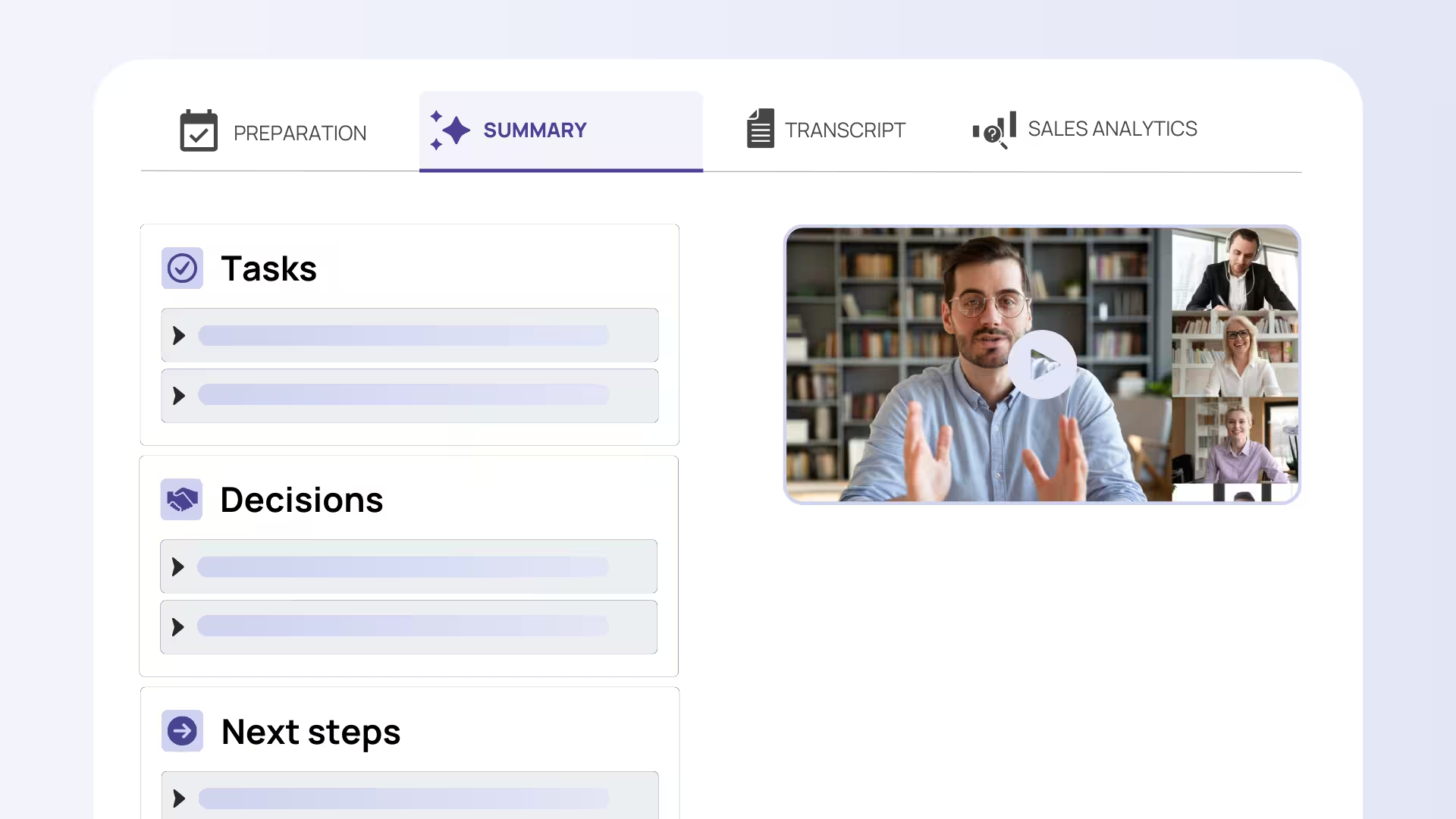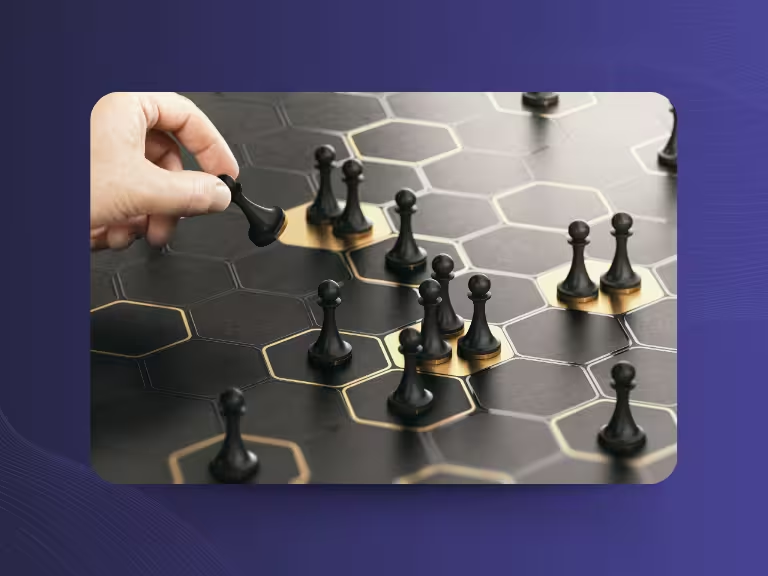Table of Contents
A strategy session is a dedicated meeting where teams step away from daily operations to focus on long-term planning and strategic decision-making. Unlike regular meetings that tackle immediate tasks, strategy sessions create space for big-picture thinking, goal setting, and organizational alignment around a shared vision.
These sessions drive organizational success by helping teams navigate change, set priorities, and allocate resources effectively. However, many organizations struggle with running productive strategy sessions. Common challenges include unclear objectives, poor facilitation, and lack of follow-through on decisions made during the meeting.
This comprehensive guide will show you how to prepare, conduct, and follow up on strategy sessions that deliver real results. You'll learn practical techniques for engaging participants, innovative formats to boost creativity, and methods to ensure your strategic discussions translate into actionable plans.
The Purpose and Importance of Strategy Sessions
Defining a Strategy Session
A strategy session is focused time specifically allocated for strategic thinking rather than operational tasks. The primary objectives include setting organizational priorities, navigating market changes, and ensuring all team members align around the company's vision and direction.
What sets strategy sessions apart from regular meetings is their forward-looking nature. While typical meetings address current projects and immediate concerns, strategy sessions explore questions like: Where do we want to be in three years? How should we respond to industry disruption? What capabilities do we need to build?
During these sessions, participants engage in deeper analysis, creative problem-solving, and collaborative planning that shapes the organization's future trajectory.
Why Strategy Sessions Are Essential for Businesses
Strategy sessions play a crucial role in long-term planning and resource allocation. They provide a structured environment where leadership can make informed decisions about investments, market positioning, and organizational development. Without regular strategic planning meetings, companies often find themselves reactive rather than proactive in their approach to growth and change.
These sessions contribute significantly to innovation and competitive advantage. When diverse perspectives come together in a focused setting, teams generate creative solutions and identify opportunities that might otherwise be overlooked. Research from Harvard Business Review shows that companies with regular, well-structured strategy sessions outperform their competitors by 20% in revenue growth.
The difference between poorly run and well-facilitated sessions is dramatic. Ineffective strategy sessions waste time, frustrate participants, and produce vague outcomes. In contrast, well-executed sessions energize teams, create clear action plans, and build momentum for implementation.

Preparing for a Successful Strategy Session
Setting Clear Goals and Agendas
Before scheduling your strategy session, define specific, actionable outcomes you want to achieve. Instead of vague goals like "discuss our strategy," aim for concrete objectives such as "define our market expansion priorities for the next 18 months" or "identify three new revenue streams to pursue."
Craft an agenda that balances discussion, decision-making, and creative thinking. For example, start with data review and situation analysis, move into brainstorming and option generation, then conclude with decision-making and action planning. This flow ensures productive momentum throughout the session.
Time-boxing agenda items keeps discussions focused and productive. Allocate specific timeframes for each topic and stick to them. A typical four-hour strategy session might include 45 minutes for market analysis, 90 minutes for strategic option development, and 60 minutes for decision-making and action planning.
Curating the Right Participant Mix
Select cross-functional and diverse attendees to foster varied perspectives. Include representatives from different departments, experience levels, and backgrounds. A technology company's strategy session might bring together product managers, sales leaders, customer success representatives, and finance professionals.
Ensure you include decision-makers and key influencers who can commit resources and drive implementation. Having the right authority in the room prevents delays and builds commitment to the outcomes.
Focus on inclusivity by developing strategies to involve underrepresented voices. This might mean actively inviting input from quieter team members, considering different communication styles, or using structured formats that give everyone equal opportunity to contribute.
Gathering and Sharing Relevant Materials
Prepare essential data, reports, and background information well in advance. Participants need context to make informed strategic decisions. Share market research, financial performance data, competitive analysis, and customer feedback at least a week before the session.
Consider using pre-session surveys or interviews to surface key issues and gather initial input. This preparation helps identify areas of agreement and disagreement before the meeting, making the session more efficient.
Leverage collaboration tools for seamless material distribution. Digital platforms ensure everyone has access to the same information and can contribute ideas before the meeting begins.
Best Practices for Running an Effective Strategy Session
Facilitation Techniques That Foster Engagement
Encourage balanced participation through structured techniques like round-robin sharing, where each participant contributes ideas in turn. Break large groups into smaller teams for portion of the discussion, then bring insights back to the full group.
Use silent brainstorming and affinity mapping to surface fresh insights. Have participants write ideas individually before sharing them aloud. This approach prevents groupthink and ensures diverse perspectives emerge.
Actively manage dominant voices and mitigate cognitive biases. Set ground rules for participation, redirect conversations when needed, and ask specific questions to draw out quieter participants. Challenge assumptions and encourage devil's advocate viewpoints to strengthen strategic thinking.
Incorporating Innovative Formats
Consider alternative methods beyond traditional boardroom discussions. Design Thinking workshops encourage human-centered problem-solving. World Café dialogues create multiple conversation stations around different strategic topics. Scenario planning helps teams prepare for various future possibilities.
Embrace iterative feedback and prototyping in strategic planning. Instead of trying to perfect ideas in one session, develop concepts quickly, test them with stakeholders, and refine based on feedback. This approach leads to more robust strategies.
Apply these formats strategically based on your objectives. Use Design Thinking when developing customer-focused strategies, World Café for exploring multiple strategic options, and scenario planning when facing significant uncertainty.
Navigating Virtual and Hybrid Strategy Sessions
Maintain focus and interaction in remote settings through shorter, more frequent sessions. Break four-hour in-person sessions into two-hour virtual meetings spread across multiple days. This approach accommodates screen fatigue while maintaining momentum.
Leverage digital whiteboards, polling tools, and breakout rooms to create interactive experiences. Platforms like Miro and Mural enable collaborative visual thinking, while polling tools help gather quick input from all participants.
AI-powered meeting assistants like Sally can enhance virtual strategy sessions by providing automatic transcription, summarization, and follow-up automation. This technology ensures nothing gets lost and helps maintain accountability for action items.

Post-Session Follow-Up: Accountability and Measurement
Translating Discussions into Actionable Plans
Assign specific responsibility for each action item with clear deadlines and success metrics. Instead of vague assignments like "improve customer experience," create specific tasks such as "John will survey our top 20 customers about service satisfaction by March 15th."
Document decisions and share detailed minutes promptly. Send comprehensive summaries within 24 hours while discussions are still fresh in everyone's mind. Include not just what was decided, but also the reasoning behind decisions.
Use project management tools to track progress and keep teams aligned. Regular check-ins and progress updates maintain momentum and ensure strategic initiatives don't get lost in daily operations.
Measuring the Success of Your Strategy Sessions
Track meaningful KPIs including execution speed, goal attainment, and participant satisfaction. Measure how quickly action items are completed, whether strategic objectives are achieved, and how engaged team members feel about the process.
Implement feedback surveys immediately after sessions and conduct follow-up assessments 3-6 months later. Initial surveys capture immediate reactions, while delayed surveys measure actual implementation effectiveness and long-term impact.
Adjust future sessions based on measured outcomes and lessons learned. If participants consistently report that sessions are too long, experiment with shorter formats. If action items aren't being completed, strengthen accountability mechanisms.

Adapting Strategy Sessions to Culture and Evolving Needs
Tailor facilitation styles to match organizational culture. High power-distance cultures may need more structured approaches with clear hierarchy, while egalitarian cultures benefit from collaborative, consensus-building formats.
Encourage cultural sensitivity when working with multinational teams. Consider time zones, communication preferences, and decision-making styles when designing sessions for diverse global participants.
Embrace technological advancements such as AI analytics for meeting insights and immersive VR environments for creative collaboration. These tools can enhance engagement and generate new possibilities for strategic thinking.
Conclusion: Unlock the Full Potential of Your Strategy Sessions
Effective strategy sessions require thoughtful preparation, skilled facilitation, inclusive participation, and disciplined follow-up. When done well, they create clearer strategic alignment, generate actionable outcomes, and enhance team engagement around shared goals.
The key takeaways for success include setting specific objectives, curating diverse participants, using proven facilitation techniques, and maintaining accountability for implementation. Organizations that master these elements gain significant competitive advantages through better strategic decision-making and execution.
Don't be afraid to experiment with different formats and technologies to find what works best for your team. The strategic planning landscape continues evolving, and successful organizations adapt their approaches accordingly.
Start planning your next strategy session using these best practices. Consider leveraging modern tools like Sally for meeting automation and efficiency, but remember that technology should enhance, not replace, thoughtful human interaction and strategic thinking.

Try meeting transcription now!
Experience how effortless meeting notes can be – try Sally free for 4 weeks.
Test NowOr: Arrange a Demo Appointment

.avif)



